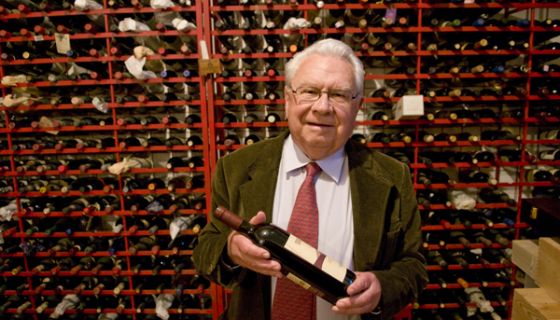One of Italy’s most famous oenologists, Giacomo Tachis, died on Sunday at the age of 82. He became world-famous as Antinori’s head oenologist from 1961 to 1999 and for his contribution to the creation of Sassicaia, a Cabernet Sauvignon/Cabernet Franc blend which, from its first real commercial offering in 1971, was made by him. Although Sassicaia was the brainchild of Marchese Mario Incisa della Rocchetta, the father of the current owner Nicolò, it was Tachis who modernised the wine and introduced stainless steel for its fermentation. Both Mario and he agreed on making a Bordeaux-style wine aged in barrique, but Tachis’s regular trips to Bordeaux and his encounters with the hugely influential Bordeaux oenologist Émile Peynaud gave him the knowledge to fine-tune the approach and improve the wine. Subsequently Sassicaia became Italy’s most famous wine.
In Sassicaia’s wake, Tachis was also instrumental in the creation of Antinori’s Tignanello and Solaia. This trio, together with Ornellaia, triggered the trend for what were dubbed Supertuscans, high-quality wines frequently based on French varieties with or without Sangiovese, aged in barrique and produced in Tuscany, a region which until then had not been known for outstanding quality.
Tachis’s interest was not confined to Tuscany, however. He also acted as a consultant for Sardinian producers Argiolas and Santadi. The latter, a ‘mere’ co-op, saw its quality soar while its Terre Brune, made from the local Carignano variety and aged in new French barriques, became an instant success.
Tachis became so famous that his mere association with a producer promised immediate commercial success. While the fascination for international varieties and French oak has slowly started to wane in Italy, Tachis’s influence has gone much further than this and has put a firm stamp on Italy’s recent vinous history.
Tachis is pictured above by photographer Jon Wyand.














